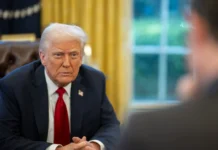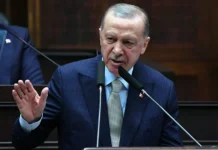The Oregon Jewish Museum and Center for Holocaust Education moved to its new location in Portland’s Pearl District this summer — taking over the space once held by the Museum of Contemporary Craft.
The OJMCHE is a conglomeration: It houses the Jewish history museum, with an emphasis on discrimination and resistance; a Holocaust resource center; and two art galleries. The second floor contains everything except the art galleries, which are located on the ground floor.
In October the museum opened its second round of art exhibits at its new location: a smaller exhibit, Munich to Portland: A Painting Saves a Family, containing only two paintings by Otto Stein; and a larger one entitled I AM THIS: Art by Oregon Jewish Artists. Both shows run through Feb. 4.
I AM THIS is an exhibit of 15 paintings and sculptures by three generations of Jewish artists. The artists represented all have some relationship to Oregon, and their works range in date from 1928 to 2017.
The exhibit was curated by Bruce Guenther, former chief curator of the Portland Art Museum; he frames the show with a theory by the influential art critic of the modern era, Harold Rosenberg, who in the 1960s asked, “Is there a Jewish art?”
Rosenberg believed that the meaning of art in the modern era flowed from the “function of self-creation.” The idea that art should come from self-creation or self-expression is still with us today. Though there’s another idea valued in contemporary times: identity art.
Identity art is driven by the identity of artists — religion, class, ethnicity and gender. It is art whose main purpose is to promote social change. So, though we are still married to Rosenberg’s idea of the artist as an original, as self-creator, we also are strongly tied to the idea that artists should “say something” with their art, preferably on behalf of a cultural group with which the artist identifies. Contemporary artists work between these two seemingly opposite goals: expressing their individuality and speaking for the group.
Jewish artists express their religious identity even when their subject seems far removed from Jewish culture, as is the case with artworks in I AM THIS, such as “Landscape (View of Portland)” by Mark Rothko; “Geraniums – Snow – Night” by Shirley Gittelsohn; or “Marmoleum,” an abstract sculpture by Mel Katz.
Rothko, the best-known of the artists exhibited, has three paintings in I AM THIS. His oil painting “Landscape (View of Portland)” is done in an Impressionistic style — not in the style of the works for which he is best known, which are large sized canvases of color fields absent of recognizable subject matter. Rothko is so closely identified with Portland’s art history that the nearby Portland Museum of Art is planning an addition — the Mark Rothko Pavilion.
Unlike the Portland Museum of Art, the OJMCHE frames art in terms of Jewish history and identity. Even when artists like Russian-born Rothko set aside that identity to search for alternate mythologies and concerns, artistic or otherwise, their art and life is considered in terms of questions that immigrants face.
Which customs should we keep, if any? Or for Jewish immigrants, how far can we move away from our past and still keep our identities as Jewish people? How important is it to retain our Jewishness? These are questions answered differently, whether by third-generation Jewish-Americans or by children of Holocaust survivors.
The two portrait paintings by Otto Stein in the east gallery are reminders of why Jewish-Americans, or Jewish people elsewhere, are so preoccupied with questions of cultural survival.
The story behind these portraits of an unknown female is the draw for this set of paintings. One portrait was sold in exchange for a visa to escape Germany two weeks after Kristallnacht (the night in 1938 when Nazi officials in Germany directed the destruction of Jewish temples and businesses). The other was brought to America when its owners fled there from Germany.
The first of the exhibits on the second floor opens with a question: Why study the Holocaust?
This particular question has never seemed so relevant.
Locally, copies of Eugene Weekly were taken and burned recently by someone claiming to be an anti-antifa supremacist. The cover story of EW that week was on anti-fascists. On the national scene, it has been alarming to many to have a chief adviser in the White House with close ties to white supremacist groups, for example, and to hear the president of the United States posit, a few months ago, that there were “fine people” among the white supremacists who chanted Nazi slogans in Charlottesville.
The first time I visited the OJMCHE I viewed all the exhibits on the first floor and the second floor. This second time I went to see the art on the first floor. It’s comforting to know the second floor is up there, in case we need to be reminded or review the events of our past. In case we might want to listen to Holocaust survivors who moved to Oregon to tell their stories, or to hear young Oregonians discuss the way they feel about their Jewish identities. I prefer to look at the art, but it’s good to know the second floor is up there, framing the rest.
The Oregon Jewish Museum and Center for Holocaust Education is open 11 am to 5 pm Tuesday through Thursday, 11 am to 4 pm Friday and noon to 5 pm Saturday and Sunday. It is located at 724 NW Davis Street, Portland. Admission is $8 adults, $5 students and seniors, free for children 12 and under.


























